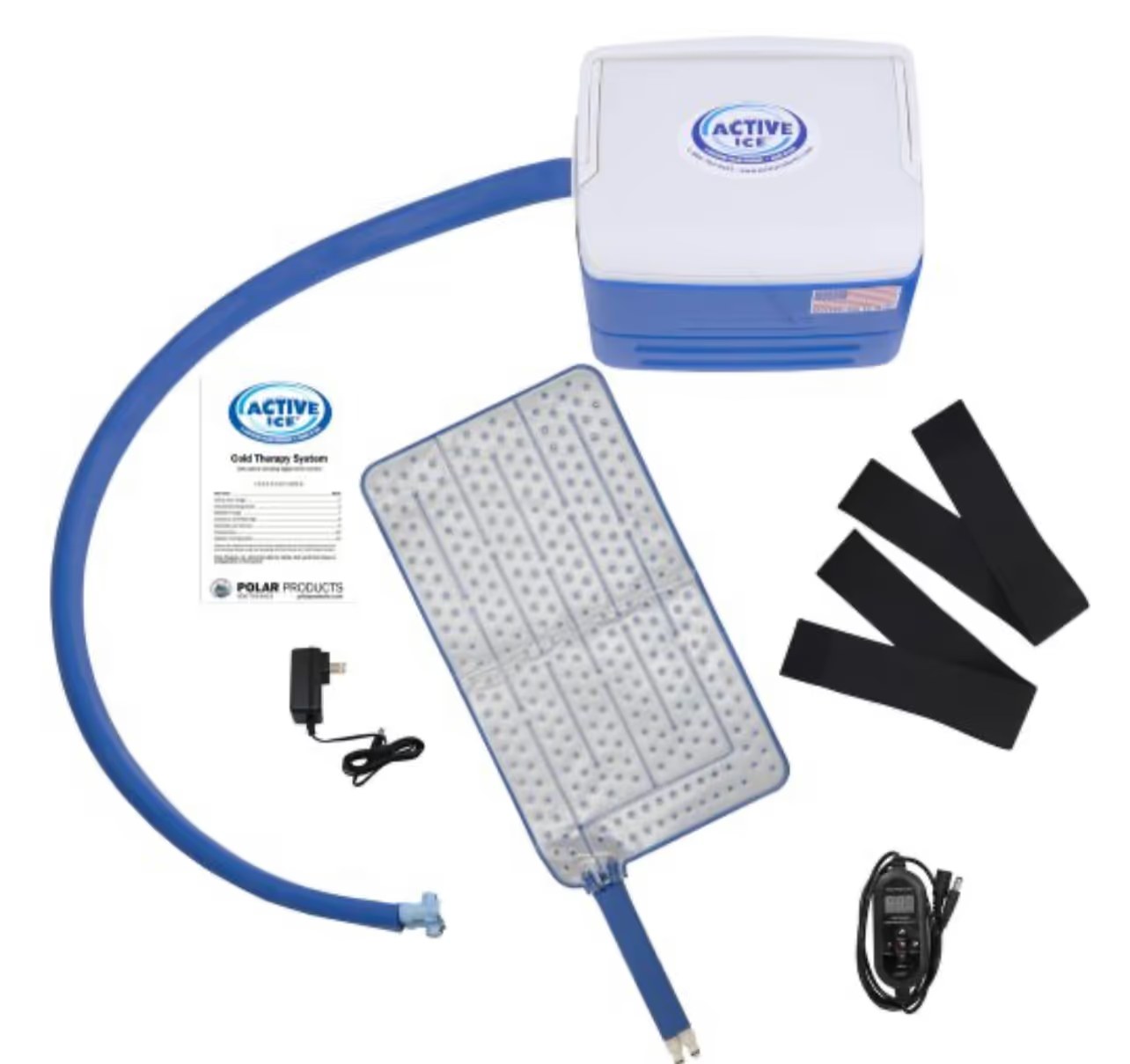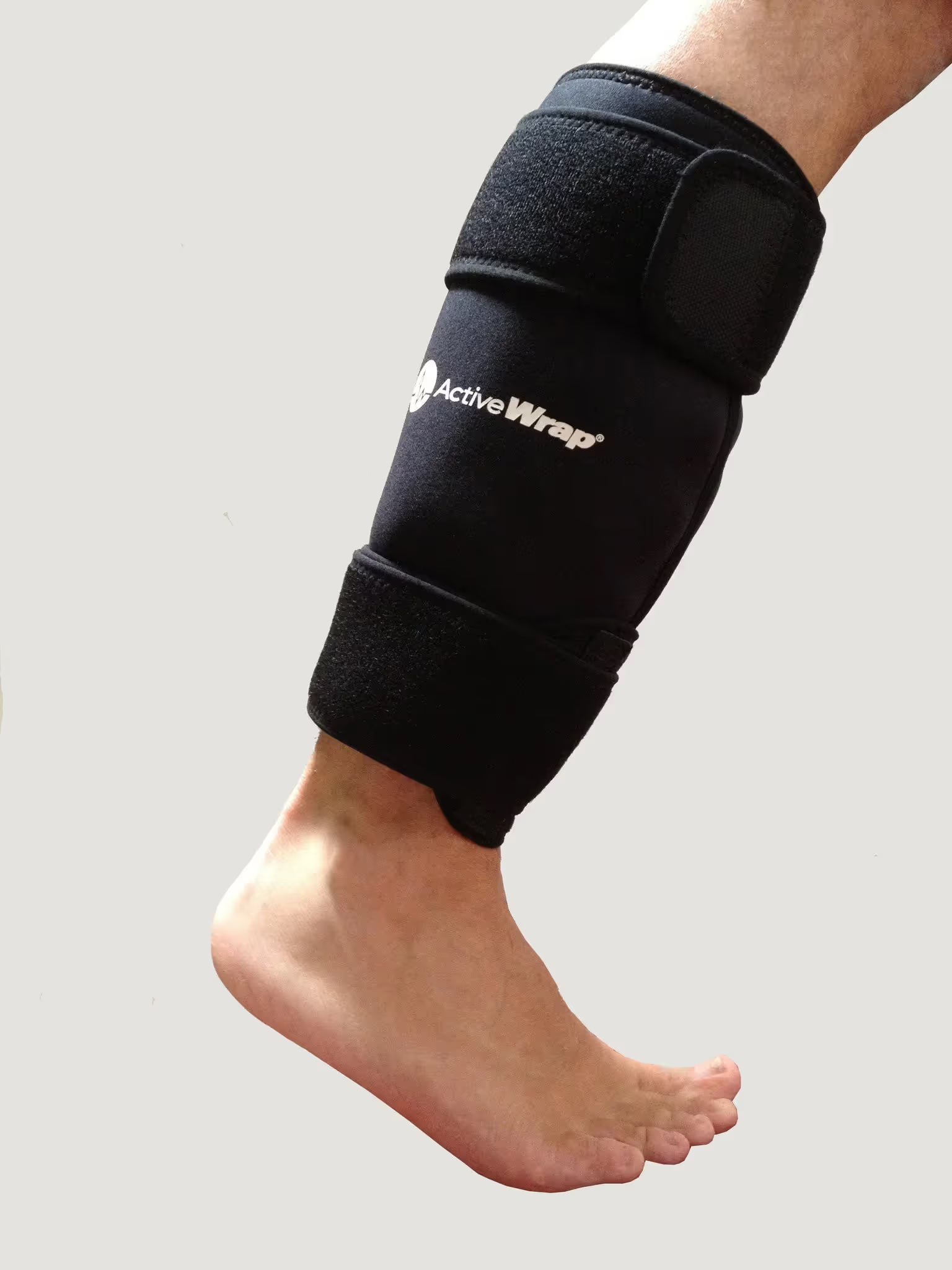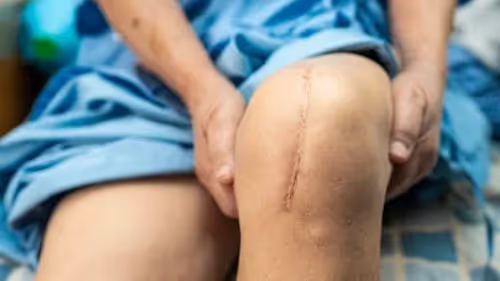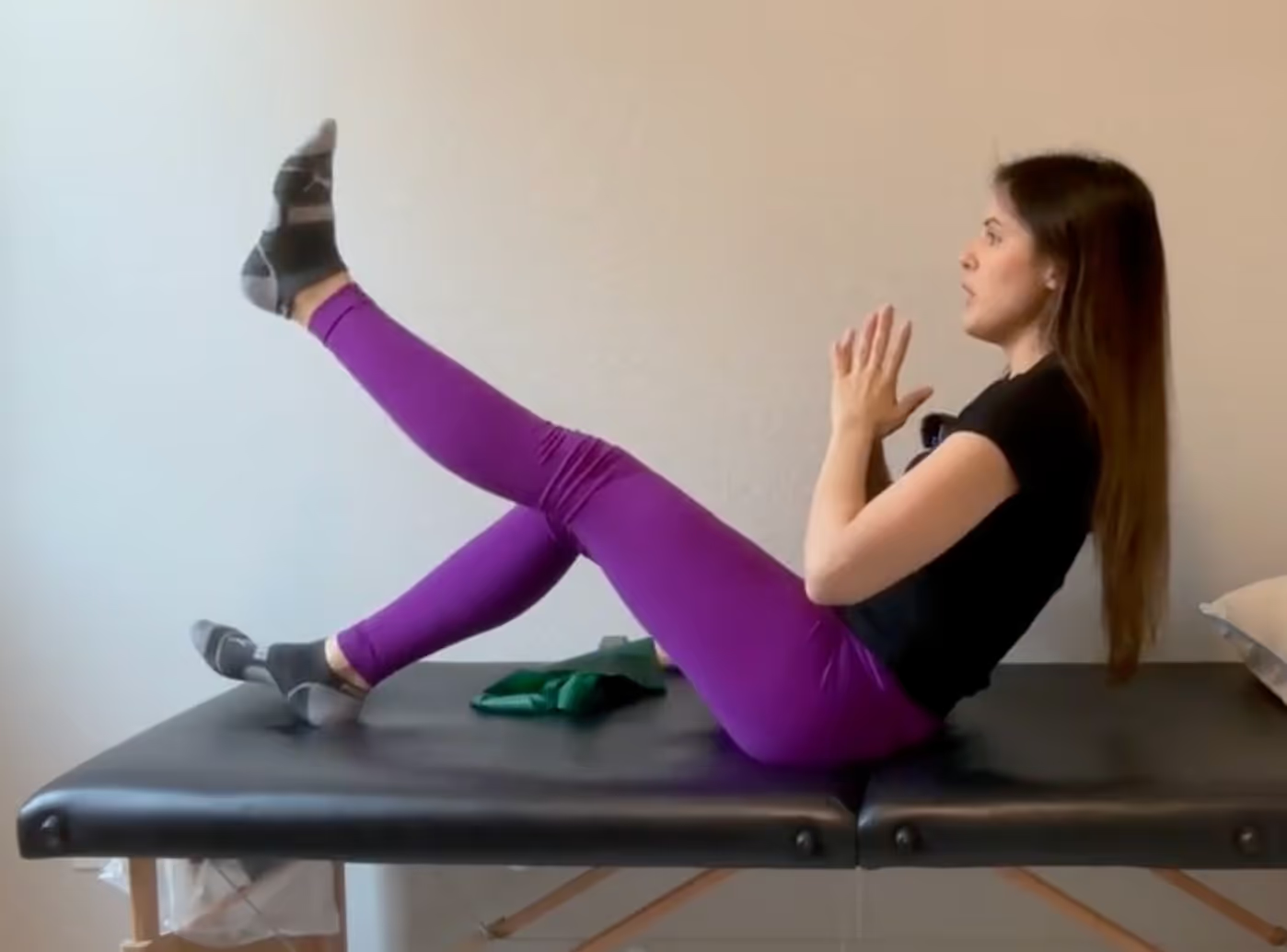Knee replacement surgery, also known as knee arthroplasty, is a common surgical procedure that is performed to replace a damaged or worn knee joint with an artificial joint. The procedure is typically recommended for individuals who have severe knee pain and limited mobility that is not relieved by non-surgical treatments such as physical therapy, medications, or injections.
There are several reasons why a person may need a knee replacement surgery. The most common reason is osteoarthritis, which is a degenerative condition that causes the cartilage in the joint to wear away, resulting in pain, swelling, and stiffness. Other conditions that may require knee replacement surgery include rheumatoid arthritis, post-traumatic arthritis, and avascular necrosis.
The knee joint is composed of three main components: the femur (thigh bone), the tibia (shin bone), and the patella (kneecap). During a knee replacement surgery, the damaged parts of these bones and cartilage are removed and replaced with metal and plastic components that mimic the natural shape and movement of the knee joint.
The procedure is typically performed under general anesthesia or spinal anesthesia, which numbs the lower half of the body. The surgeon will make an incision on the front of the knee and move aside the muscles and ligaments to gain access to the joint. The damaged parts of the knee joint are then removed using specialized tools, and the new artificial components are implanted into the bones using cement or other fixation techniques.

The surgeon will then test the movement and stability of the new joint, and make any necessary adjustments to ensure proper alignment and fit. The incision is then closed with stitches or staples, and a bandage or dressing is applied to protect the wound.
Following the surgery, the patient will be monitored in the hospital for several days to ensure proper healing and to manage any pain or discomfort. Physical therapy and rehabilitation are typically recommended to help restore knee function and strength, and to promote a full recovery.
The recovery time for knee replacement surgery can vary depending on the individual and the extent of the surgery, but most patients can expect to resume normal activities within several weeks to several months after the procedure. It is important to follow the rehabilitation plan provided by the healthcare provider to ensure proper healing and to minimize the risk of complications.
While knee replacement surgery is generally considered safe and effective, it is not without risks. Complications can include infection, blood clots, nerve damage, and implant failure. Patients who have certain medical conditions, such as heart disease or lung disease, may have an increased risk of complications.
Knee replacement surgery is becoming more and more popular every year with around 1-2 million people a year undergoing total knee replacement surgery. The surgery is a very successful surgery decreasing overall knee pain after full recovery. Full recovery journey takes 12-16 months due to the intensive nature of this surgery. A total knee replacement involves a complicated healing process which needs guidance from a skilled physical therapist.
Post operative care is crucial to the success of your surgery. Physical therapy and guidance from your doctor will help you not make these 5 common mistakes.
Don't Overdo It
A lot of people after a knee replacement surgery will want to get back to normal ASAP. This is a good and bad thing. After a major surgery, it is important to give your body a chance to heal and rest. However, a knee replacement is unlike any other surgery or injury, you are expected to get up and do exercises right after surgery - but all within reason. Doing too much will cause most patients to experience pain and more swelling/inflammation. Resting with ice and elevation can help stop this vicious cycle.
After a knee replacement, swelling and inflammation are common, which can cause pain, stiffness, and difficulty moving the knee. Both ice and elevation can be helpful in reducing swelling and promoting healing. Ice helps to constrict blood vessels and reduce blood flow to the area, which in turn reduces swelling and inflammation. Ice also has a numbing effect, which can help to reduce pain and discomfort. Elevation helps to reduce swelling by allowing fluid to drain away from the knee. When the knee is elevated, gravity helps to pull excess fluid out of the joint and into the rest of the body. This can help to reduce the amount of fluid that accumulates in the knee, which can in turn help to reduce pain and stiffness.
Using both ice and elevation together can be particularly effective in reducing swelling and promoting healing after a knee replacement. It's important to follow your healthcare provider's recommendations for how often and for how long to use ice and elevation after surgery, as well as any other post-operative instructions for caring for your knee.

Best ice pack that stays cold. Use code DRSAM10 for 10% off

Best ice machine that is easy to use and set up. Use code DRSAM10 for 10% off (cheaper than Amazon!)
The first week after your surgery, you will be given physical therapy exercises by your physical therapist. Most of them include low intensity active exercises like quad sets, glute sets, ankle pumps. The physical therapist will also tell you how to rest your leg with it elevated and with a straight knee. You will also be required to get up and walk every hour (unless you were specifically instructed not to - which would be very rare). Remember to follow your physical therapists professional instruction the first week after surgery.
Don't Under Do It
After the first few weeks, it is important to start getting up and doing things again. Research has shown people who live alone while recovering from a knee replacement have better outcomes than those who live with a caregiver. This is because the person who lives alone is doing all their activities of daily living (ADLs) and making that knee work after a knee replacement! Each week, you should push to do a little bit more. However, don't go from housework to walking for an hour in Walmart. Do a little bit more each week and you will have less discomfort, significant pain and swelling.
Starting a walking program can significantly help your new knee. At 4 weeks post surgery, you can start to walk every day 2x per day and slowly increase this each week.
Walking program example:
Week 4 post surgery: walk 5 minutes 2x per day
Week 5 post surgery: walk 6 minutes 2x per day
Week 6 post surgery: walk 8 minutes 2x per day
Week 7 post surgery: walk 10 minutes 2x per day
With a walking program like this, we can help the new knee slowly adapt to the new changes. It is important to take the walking program slow and not over do it.
Sitting all day after a knee replacement surgery can have a negative impact on your recovery and can increase the risk of complications. When you sit for long periods, your knee joint remains in a static position, which can cause stiffness, swelling, and reduced range of motion. It can also put pressure on the knee, which can increase pain and discomfort.
Additionally, prolonged sitting can increase the risk of developing blood clots in your legs, a condition known as deep vein thrombosis (DVT). This is a potentially serious complication that can lead to a pulmonary embolism, which is a blockage of blood flow to the lungs.
Movement and activity are essential for a successful recovery after knee replacement surgery. Your healthcare provider will likely recommend a personalized rehabilitation program that includes exercises and activities designed to improve knee range of motion, strength, and flexibility. This may include walking, stretching, and specific exercises to target the muscles and tissues around the knee joint.
Using the Wrong Pillow
It is imperative to keep your knee straight when resting after a knee replacement. Those who rest with their knee bent on a “knee replacement pillow” might end up with a slight bend in their knee that could last forever. A slight bend in your new knee can cause a variety of issues such as limping and quad weakness. Even though it is a comfortable position, the comfort is not worth the risk of your new total joint replacement.
While it may seem like a simple directive, maintaining knee extension plays a vital role in the successful recovery and long-term outcomes of the procedure. One of the primary reasons for keeping your knee straight after a knee replacement is to prevent contractures. Contractures occur when the muscles, tendons, and soft tissues around the knee become shortened and tight, leading to a loss of range of motion. By actively maintaining knee extension, you help counteract the tendency of these tissues to become stiff, promoting better flexibility and preventing the development of contractures.
Keeping your knee straight aids in maintaining proper alignment of the joint. A knee replacement is designed to restore the normal mechanics and function of the knee, and ensuring the knee is straight helps to maintain this alignment. This alignment not only optimizes the functioning of the implant but also helps distribute forces evenly across the joint, reducing the risk of excessive wear and tear.
After surgery, the knee joint goes through a healing process. By keeping the knee straight, you provide stability and support to the joint, allowing the healing tissues, such as the incisions and repaired ligaments, to mend properly. Maintaining knee extension also helps minimize swelling and inflammation in the joint, which can accelerate the recovery process.
Regularly straightening your knee after a knee replacement surgery can help enhance muscle strength around the joint. As you actively engage the muscles involved in knee extension, such as the quadriceps, you stimulate their growth and development. Stronger muscles provide better support to the knee, allowing for improved stability and overall function.
Failure to keep your knee straight after a knee replacement surgery can lead to various complications. One common complication is a flexion contracture, where the knee becomes permanently bent, limiting your ability to fully straighten it. This can significantly impact mobility and hinder your ability to perform daily activities. Additionally, a flexed knee can put undue stress on the surrounding structures, potentially leading to pain, instability, and implant loosening.
By diligently maintaining knee extension, you set the stage for optimal functional outcomes following knee replacement surgery. A straight knee allows for a more natural gait pattern and facilitates activities such as walking, climbing stairs, and getting in and out of chairs. By focusing on keeping your knee straight, you enhance your chances of achieving improved mobility and a higher quality of life.
There are many pillows marketed online that are for knee replacements, but your best option is a pillow wedge or just a mountain of 3 pillows. You want to be able to rest will the pillows under your leg at least for 30 minutes with no extra stress on the knee or pain. Arranging the pillows to support your joint replacement is important for reduced pain.

Wedge pillow

Do NOT forget to do your PT
Your physical therapy rehabilitation is essential for optimal results after a knee replacement. A big part of your rehab will be getting full range of motion of your knee. Your surgeon will want you to have full flexion/bend (120 degrees) and full extension/straight (0 degrees). This will ensure you can do normal things in life like get in and out of a chair, pick up things on the ground, or even returning to gardening with no tightness in your joint replacement.
Getting your range of motion (ROM) is crucial in the first 6 weeks. Scar tissue rapidly starts to form after a major surgery and if you do not push through the stretches, your knee will tighten up. However, with this said, at 6 weeks post surgery, you are not considered “out of luck” in regards to the mobiltiy of your new joint replacement. Most patients can still gain even more range of motion after 6 weeks, but at this time, we are working on stretching the muscles. With most knee replacement patients, it is important to do all the stretches, even if they hurt. Pain medication can help you get through the stretching, along with other tips your physical therapist will give you.
Your rehabilitation will also include a lot of strengthening exercises. After surgery, your quadriceps muscles on your surgical side will be 60% weaker than your other leg. This is because of swelling, pain, and muscle damage from surgery. Strengthening comes with time and effort. Physiologically, it takes 6 weeks to build muscle fiber and increase the strength of your muscles. Be patient and consistent with your exercises. Strengthening your leg will help the knee replacement last longer and give you more confidence overall.
Engaging in physical therapy (PT) after a knee replacement surgery is crucial for a successful recovery. PT helps restore range of motion, strengthen muscles, promote healing, reduce swelling, improve balance and coordination, enhance functional abilities, prevent complications, and provide education for self-management. By committing to your PT program, you maximize the benefits of the surgery, regain mobility and strength, and empower yourself with long-term joint health knowledge and tools. Consistency and adherence to PT are key to achieving optimal outcomes.
Do NOT walk without assistance
Using an assistive device is part of the recovery process after a knee replacement surgery for many reasons. A walker or crutches will be given to your right after surgery. You will need these to off load the pressure on your knee, but also to ensure you are safe. It is very common to have poor balance after a knee replacement. Along with poor balance, your quadriceps muscle will also be very weak. This muscle is important to keep you upright. Weak quads can cause the knee to buckle suddenly, which can lead to falls.
Before a knee replacement surgery, the quadriceps muscle is already 20% weaker compared to the other leg. After surgery, it is now 60% weaker. That gives you an idea of why you will need an assistive device after surgery. Walking on a very weak leg is dangerous and could cause you to fall.
Eventually, you will transition from a walker to a cane. You will notice when you start walking without the walker, you will have a slight limp. You can get around the house pretty good with this limp, but eventually, this limp will start to irritate your back and hip. At this point, a cane is helpful. Just one extra point of contact will improve your gait mechanics and help your surrounding joints.
Once you can walk without a limp, you will be able to put the cane away. You’ll notice increased soreness and pain if you walk too far too soon without your cane. At this point, you can follow the walking program listed above. You can absolutely train your knee to adapt to what you need.
Please talk with your surgeon or Physical Therapist at your follow up appointments about these most common mistakes and see if these information is right for you. If you have having difficulty with your rehabilitation process, please sign up for a course at http://www.SUCCEEDCOURSES.com.

.avif)








